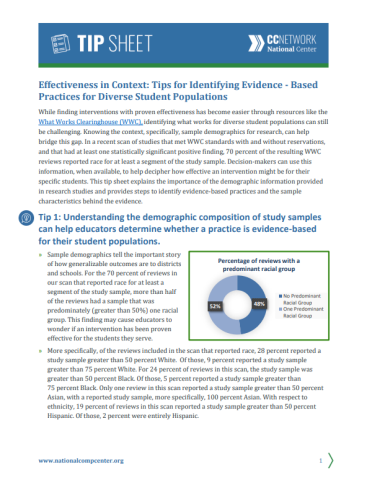What Works for Diverse Student Populations?


Using evidence-based programs and practices gives decision-makers confidence in the choices they make to support student achievement. However, knowing what works for whom requires reading the research fine print to get to the real (demographic) story of who benefited from an educational intervention. The demographic story can shed light on the ages and grades, race and ethnicity, gender and other key details about study participants. In the fine print decision-makers may find answers to some of their most critical questions, such as “Will it work for my state, my district, and my students?” The answers to these questions can often be informed by understanding the study context including characteristics like the study setting and sample.
A good source of information on evidence-based practices is the Institute of Education Sciences’ What Works Clearinghouse (WWC), whose reviews of study findings often contain this important contextual information. In a new National Comprehensive Center tip sheet, Effectiveness in Context: Tips for Identifying Evidence-Based Practices for Diverse Student Populations, decision-makers will find tips for using the WWC database to identify evidence-based practices that have been found to be effective for diverse student populations. The first tip examines the results of a recent scan of WWC reviewed studies and discusses the importance of understanding the racial and ethnic make-up of the study samples in them. The second and third tips delve into how to identify evidence-based programs and practices using the WWC website and how to find the sample characteristics behind the evidence.